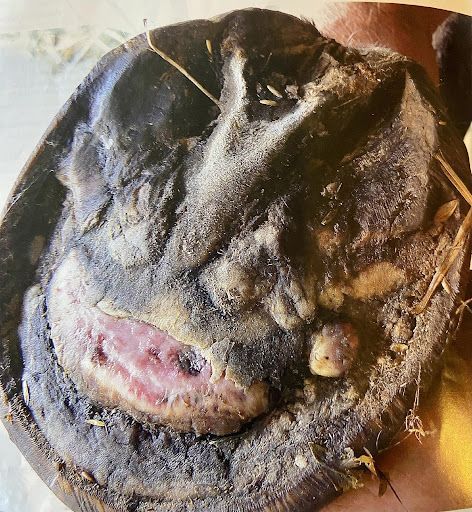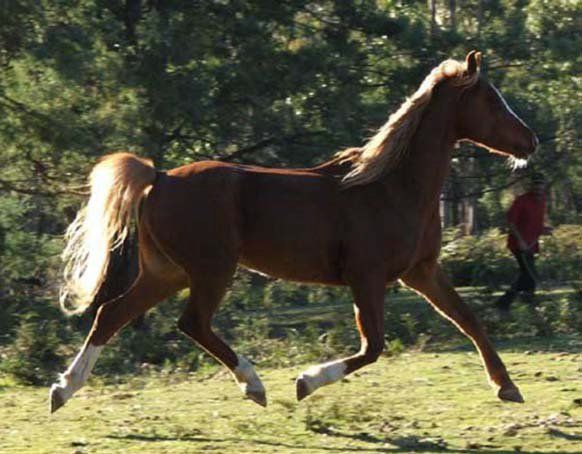CAN YOU LEARN A PRACTICAL SKILL ONLINE?
Wild About Hooves • 19 November 2020
There is nothing quite like getting hands-on when you are learning the art of trimming horses hooves. Wild About Hooves popular weekend workshops allow their students plenty of opportunity to ‘have a go’ in a situation as close to real-life. Students start practicing by trimming horse’s cadaver legs, they also practice positioning themselves under a horse safely and ergonomically.
Students retain more information when they physically practice, instead of just seeing or hearing it. However, when a worldwide pandemic puts a stop to everything, and public events banned, border restrictions in place, and other impacts make it impossible to travel and train in person, Jen Clingly and Jeremy Ford decided to adapt and reinvent their learn to trim courses.
“We can still bring this “learn-by-doing principle” of adult learning into what we are teaching regardless of whether we teach online or off line.” Clingly highlights. “But it is challenging especially for us to articulate clearly and demonstrate without the constant interaction of questions and answers that face to face provides.”
When it comes to traditional face-to-face training, the principle of maintenance hoof trimming is easy to grasp and execute. So how do the team at Wild About Hooves deliver their online hoof care course? How do students learn to do it themselves in an environment where they are not physically present to perform practical exercises? Online teaching requires very different approaches to teaching face-to-face for obvious reasons. Wild about Hooves shares 4 ways of teaching a practical skill via online training.
1. Get as Visual as Possible
When it comes to practical training, or teaching learners new skills, we created loads of visual with power point lectures and ‘live demonstrations of trimming.’ People learn in many different ways – visual, auditory and kinaesthetic. By delivering information online, we want to make sure we enable all the different type of learners to engage with our hoof care principles. Providing visual diagrams, animations and dot-pointing our information all helps alongside a video showing a real life demonstration of the skill in a environment that is as close to what will happen out in the field. We try and get the camera in close to the hoof to show the trim process step by step. When the brain can ‘see’ how something is done before it is attempted independently, the chance of success are much higher than just reading or hearing about it.
2. Get on Camera
Much out of our comfort zone, we got ourselves on camera. People like people, and it can significantly enhance the engagement, retention and completion rates of our course if our learners can see us talking to them.
We don't have the budget for a professionally filmed training video, but we put together some good ‘how to’ trim footage and this also enables people to engage by watching, listening and following along as the training video plays.
3. Self Paced Learning
Students can work at their own pace through the series of lessons. They can stop when they are tired or need a break and then get back to it when the time is right. Also they can go back and revisit any of the lessons to reinforce their learning. The lesson range is interesting and covers introducing the trainers and their backgrounds, the distal limb anatomy of the horse, how the hoof works, barefoot trimming, step by step hoof trimming, the relevance of the wild horse study, Australia’s desert brumbies, tools for trimming, what to look for when you trim horses hooves. All lessons are interwoven with film footage and powerpoint lectures and then access to further resources. It’s user friendly and feedback has been sensational.
4. Trainers Are Accessible and Can Be Contacted to Provide Advice and Feedback
The team at Wild About Hooves is contactable to help students who need further information and guidance. Best of all with a team of over 150 hoof care practitioners in Australia with ACEHP: The Australian Certified Equine Hoof Care Practitioners there is usually someone who students can touch base with to learn more from or who they can book in to check on their trimming and horses hooves.
Check out the link and join the team virtually! https://hooftrimmingonlinecourse.podia.com/

Laminitis kills thousands of horses every year, and leaves thousands of others debilitated with lameness. It will and can affect any horse. And for you, the horse owner it can be devastating: you feel guilty and heartbroken at your horses suffering, confused with all the information as it is typically explained by professionals in scientific terms that can be difficult to understand, costly veterinary bills and you have the major task of nursing your horse back to recovery. . Unseasonal weather patterns around Australia with abundant rain and sunshine saw laminitis at a near epidemic last year. The reason being, that the environmental conditions can trigger increases in the sugar, starch and fructan. These collectively known as non-structural carbohydrates can cause laminitis in any horse or pony. Alarm bells ring this spring!! Be warned and be prepared, for prevention is better than cure.

The extraordinary relationship between humans and the horse has been running since before the birth of Christ. Indeed, there is evidence our domestication of horses goes as far back as 3500 BC. And ever since we recognised the utilitarian value of the horse, there has been the horseshoe. The use of horseshoes has become an almost unquestioned tradition. Humans have been nailing shoes onto horses’ hooves for well over a thousand years. Who can remember back to a time otherwise?



